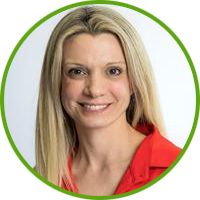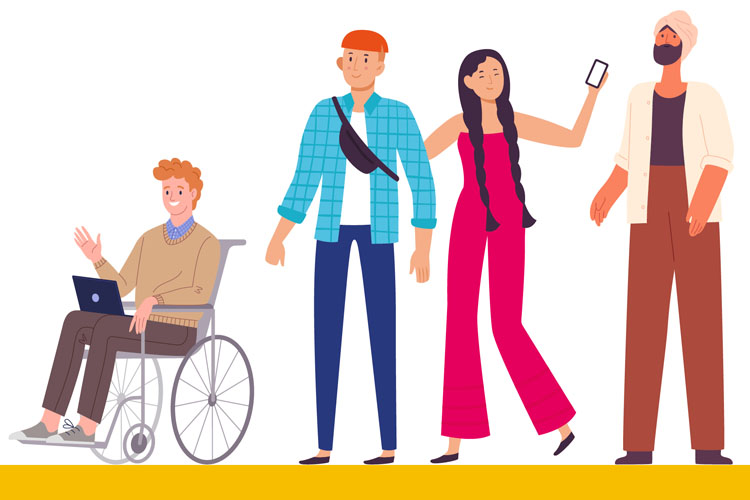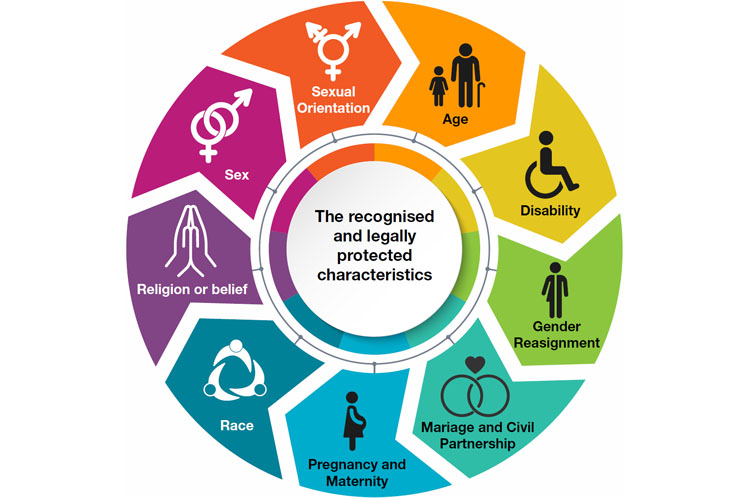Our role is to help create opportunities where people can succeed, be happy and feel safe.
Foreword

We are pleased to reaffirm our commitment to making Bracknell Forest a fair, inclusive, and equitable place to live and work and to challenging inequality where it exists. Bracknell Forest has a long and proud history of championing equality, and this scheme outlines our goals and commitments for the next 4 years to achieve this.
Our equality objectives make sure that all residents and employees regardless of race, gender, disability, age, religion, sexual orientation, or socioeconomic status are treated with dignity, respected, and given equal opportunities to thrive. We celebrate diversity and are proud to welcome new residents to the borough from near or far.
The objectives are aligned with the Public Sector Equality Duty under the Equality Act 2010 and our Council Plan and reflect our ambition to embed fairness into every aspect of our services, policies, and organisational culture. We want to be an organisation that people aspire to work for, is open to all, that truly represents and puts the people of Bracknell Forest first.
Our goal is to make sure that our services are inclusive and accessible to all, collaborating with partners and residents to reach this aim. We are committed to creating an inclusive borough and addressing inequalities in various areas of our work, beyond our legal obligations. However, we acknowledge that some residents may face discrimination and disadvantage in different aspects of life, such as employment and health.
We also recognise that while the council has a role to play in enabling services and creating the right conditions, true resilience comes from communities working together, taking the initiative, and building strong relationships across communities that foster trust, care, and local pride.
Our 10-year partnership Stronger Together Community Strategy, developed with residents and partners, is a long-term plan to help local communities grow and thrive and aims to foster a sense of identity and belonging for all everyone.
We aim to help our residents live healthier, independent lives by fostering strong, connected and cohesive communities. Resilience means individuals and neighbourhoods can adapt, recover, and thrive despite challenges like economic issues, health needs, or environmental risks building on the collective strengths within our communities.
Councillor Helen Purnell
Cabinet Member for Environment, Communities and Housing
1. Executive summary
Equality is a priority for the council and is a cross-cutting principle underpinning the delivery of our Council Plan, other key strategies, and the design of our services. Working with partners we are committed to supporting those most in need of help, challenging discrimination, tackling inequalities and strengthening community cohesion.
The vision for the borough is focused on prioritising residents, fostering sustainable, resilient, and inclusive communities. The Bracknell Forest Council Plan 2023 to 2027 outlines ambitions, goals and priorities in collaboration with residents, businesses, and partners. These include:
Engaged and healthy communities
Thriving and connected economy
The local economy includes many different aspects, such as businesses, job skills, accommodation and services.
Green and sustainable environment
Our environment includes everything around us, our parks, our cycleways and our road networks.
Over the next 4 years we will deliver our equality objectives through projects, policies and strategies that shape how we deliver services. We will work with others on areas like supporting children, young people and families and improving health, wellbeing and inclusion.
We will continuously check and review that the services we provide are appropriate and accessible, learning from the data and information we gather, alongside what our residents and employees tell us.
To do this, we will:
- use data and insight to help us to design our services and make sure our workforce reflects the people we serve
- complete Equality Impact Assessments (EqIAs) embedded within our integrated screening tool to assess the impact of decisions on our residents in relation to health and wellbeing, equalities, climate change and sustainability
- where appropriate consider the impact that our policies and decisions may have on different groups
- collect diversity information about our employees and use it to check that our employment policies and practices are fair, open and transparent and to help us build an accessible and inclusive working environment
2. The Public Sector Equality Duty - our legal duty
The Public Sector Equality Duty (PSED) makes sure we integrate equality into our policies and services. The council must consider the need to:
- eliminate unlawful discrimination, harassment and victimisation, and other conduct prohibited in the Act
- advance equality of opportunity between people who share a protected characteristic and those who do not
- foster good relations between people who share a protected characteristic, and those who do not, including tackling prejudice and promoting understanding
The PSED also requires the council to:
- Publish annual ‘equality information’ to demonstrate our compliance.
- Set one or more ‘equality objectives’ at least every 4 years.
- Publish annual gender pay gap information.
It’s important that the council considers how its decisions advance equity, inclusion and diversity by removing or minimising disadvantages experienced by people because of their protected characteristics.
3. Our equality and inclusion objectives for 2025 to 2029
Our equality objectives guide our work and demonstrate our commitment to challenging inequality and promoting inclusivity and building cohesive and resilience communities.
We have 4 equality objectives, 3 of which are outward looking focused on residents and service users, and one of which is inward-looking, focused on our workforce. These are:
Deliver inclusive, accessible and responsive services that meet the needs of the residents.
Knowing Bracknell Forest communities and embedding that understanding in all that we do.
Actively collaborate and engage with communities.
Be an inclusive employer where everyone can achieve their full potential.
1. Deliver inclusive, accessible and responsive services that meet the needs of all our residents
We will do this by:
- providing accessible information and services that are tailored to peoples’ needs, are inclusive, fair and equitable
- making sure our communication is clear, jargon free and available in different formats so as not to exclude residents with specific needs
- focusing resources on improving outcomes for the most vulnerable residents, overcome challenges and connect them to support tailored to their needs
- improving outcomes for people tackling inequalities within our communities and empowering them to help build resilient, cohesive and inclusive communities
- promoting Bracknell Forest as a place for work for all people in the community and the borough
2. Knowing Bracknell Forest communities and embedding that understanding in all that we do
We will do this by:
- building our knowledge of Bracknell Forest communities and how we engage with them
- improving the quality and consistency of the service information we collect and our community insights to shape the way we deliver the best services for those most in need
- using the data and insights we have as a guide, adapt our services to respond to where there are gaps in people accessing our services and seek ways to understand why
- influencing others through our procurement and commissioning, regulatory and place making activities to adopt positive equality practices
- making sure councillors have the skills, and knowledge to champion equality, diversity and inclusion and role model the council’s values and behaviours framework, including the Mayor’s Charter
3. Actively collaborate and engage with communities
We will do this by:
- listening to local voices, working together to find solutions and enabling community action to support those most in need of help, challenge discrimination, tackle inequalities and strengthen community cohesion
- co-producing and involving people in co-designing services and the council’s strategic and operational decision-making processes
- building good relations between different communities so everyone can feel safe, participate and contribute, actively tackling racism and all forms of discrimination
- using culturally appropriate engagement and building trusting long-term relationships
- enabling communities to be resilient, sustainable, socially inclusive and empowered to act, when they are best placed to do so
4. Be an inclusive employer where everyone can achieve their full potential
We will be an inclusive employer:
- where our workforce better reflects Bracknell Forest’s diverse communities at all levels across the organisation
- making sure all employees develop knowledge and collaborate to champion equality, diversity and inclusion to build an inclusive and accessible council
- understanding the diverse needs of all staff, including hidden disabilities, so we provide the appropriate support
- where staff development and career progression reflect individuals’ needs and learning styles
- where everyone can participate and has an equal opportunity to fulfil their potential regardless of their background, identity, or circumstances, to thrive and be their best
4. Monitoring and reporting our progress
Annually each equality objective will be underpinned by priority actions that take the council towards the achievement of the 4-year strategy. Equality actions identified within the Equalities Scheme are incorporated within directorate service plans and monitored quarterly.
The council’s Equality Group will closely monitor the implementation and delivery of each of our equality objectives quarterly with the progress reported to our corporate management team and annually to Cabinet.
Through our Annual Equality Monitoring Report, we will provide an update on each of the 4 objectives, including how we are delivering and the outcomes across the council on the council’s website. The first Annual Equality Report for our new 2025 to 2029 objectives will be published in spring 2026.
Read our annual equality reports

Appendix 1 - protected characteristics

There are 9 recognised and legally protected characteristics covered by the Equalities Act. They are:
- age
- disability
- gender reassignment
- marriage or civil partnership
- pregnancy and maternity
- race
- religion or belief
- sex
- sexual orientation
For marriage and civil partnerships, the council is only required to make sure it eliminates discrimination, harassment and victimisation on these grounds.
In addition, the council also considers how our services, policies and practices could impact other groups who may face additional barriers. For example:
- people with caring responsibilities
- people facing financial hardship
- the military and veteran community
- care leavers
Appendix 2 - Local context highlights
A thriving population
Deprivation
58.7% of Bracknell Forest is among the 30% least deprived areas in England.
No neighbourhoods are in the 20% most deprived nationally, but 16% are more deprived than the national average, notably in Crowthorne and Wildridings and Central.1
- 1
Berkshire Observatory (MHCLG data) Index of Multiple Deprivation LSOAs by decile (2019)
Population
Bracknell Forest’s population increased by 10.1% over the last decade, surpassing the Southeast’s growth rate of 7.6%. The current population stands at 128,351(2023) individuals. The last census reported 83% of residents being born in the United Kingdom.2
- 2
Office for LG Inform (National Statistics (ONS) Population Estimates of 2023) Berkshire Observatory (ONS Census 2021)
Sex
Bracknell Forest population by sex (2023) is broken down as:
- female - 51%
- male - 49%
Cohesive communities
Race
Bracknell Forest has a similar profile of ethnicities as compared to the whole of the Southeast although the English and white population proportion has decreased over the past 10 years.
White residents make up 86.1% of the population, with 77.8% identifying as White British and 8.3% as White non-British. The remaining 13.9% belong to Black, Asian, and Minority Ethnic (BAME) groups, which represents a 38.6% increase since 2011.4
There are a notably higher proportion of ‘other Asian’ residents than other areas of the Southeast and England, partly due to a large community of Nepali residents linked to the Gurkha Company Sittang regiment based at the Royal Military Academy Sandhurst.
Bracknell town centre wards generally have a higher proportion of residents from ethnic minority communities. However, there is also a significantly higher proportion living in College Town where there is a large Nepali population.
- 4
ONS, Census 2021
Detailed breakdown of ethnic groups in Bracknell Forest (2021)
Asian or Asian British: 7.1% (up from 5% in 2011)
Black or Black British: 2.4% (up from 1.9% in 2011)
Mixed or Multiple ethnic groups: 3.1% (up from 2% in 2011)
Other ethnic groups: 1.3% (up from 0.4% in 2011)
Romanian, Polish, Hungarian and other European populations increased the most in 10 years in addition to other with newly arrived communities from Ukraine, Hong Kong, Albania and Afghanistan. The proportion of school pupils from Minority Ethnic Groups (other than White British) has reflected this and increased steadily over the past few years rising from 23.3% in 2018 to 30.7% in 2025.5
These figures indicate a growing diversity within the borough over the past decade.
15.2% of pupils in Bracknell Forest schools are known or believed have English as an Additional Language (EAL).6
| Language | Total pupils on roll where this is their first language |
|---|---|
| English | 15,907 |
| Polish | 394 |
| Romanian | 217 |
| Nepali | 171 |
| Chinese | 166 |
| Russian | 129 |
| Urdu | 119 |
| Hungarian | 99 |
| Portuguese | 98 |
| Chinese (Cantonese) | 94 |
Total number of known first languages spoken other than English
114
Nepali is the 4th most common language spoken, having swapped places with Chinese in the list since last year. Hungarian and Portuguese have swapped in 8th and 9th places, and Chinese (Cantonese) has replaced Hindi in the top 10. The top 10 languages are spoken by 91.6% of the overall population, compared to 92.2% last year.
Religion or belief
The 2011 Census data showed that over 40% of respondents reported having no religious or faith beliefs increased from 35% in 2011. The percentages of the population who identify with the major religious groups are as follows:
| Religion | Population | Percentage |
|---|---|---|
| Christian | 59,141 | 47.5% |
| Hindu | 2,942 | 2.4% |
| Muslim | 2,216 | 1.8% |
| Sikh | 1,055 | 0.8% |
| Buddhist | 1,039 | 0.8% |
| Jewish | 190 | 0.2% |
| Other religions | 743 | 0.6% |
| Religion not stated | 6,981 | 5.6% |
The proportion of residents identifying as Christian decreased from 60.5% in 2011 to 47.5% in 2021.
There has been a growth of minority religions: Hinduism, Islam, Sikhism, and Buddhism have all experienced growth, reflecting increasing religious diversity within the borough.
Sexual orientation
While specific data on the LGBTQIA+ population in Bracknell Forest is limited, national estimates can provide some context.
Of the UK household population aged 16 years and over, 3.8% identified as lesbian, gay or bisexual (LGB) in 2023. This is up from 2.2% in 2018. Applying these national percentages to Bracknell Forest’s population can provide a rough estimate as being 4,800 people.7
Younger people were more likely to identify as LGB than older people and men were more likely to identify as LGB (4.2%) than women (3.4%).
Disability
As of the 2021 Census, approximately 14.5% of Bracknell Forest residents reported having a disability. This includes 5.3% who were “disabled and limited a lot” and 9.2% who were “disabled and limited a little”. This equates to around 18,058 individuals with living with disabilities.8
Our borough
You can find out more about our borough in our council plan.